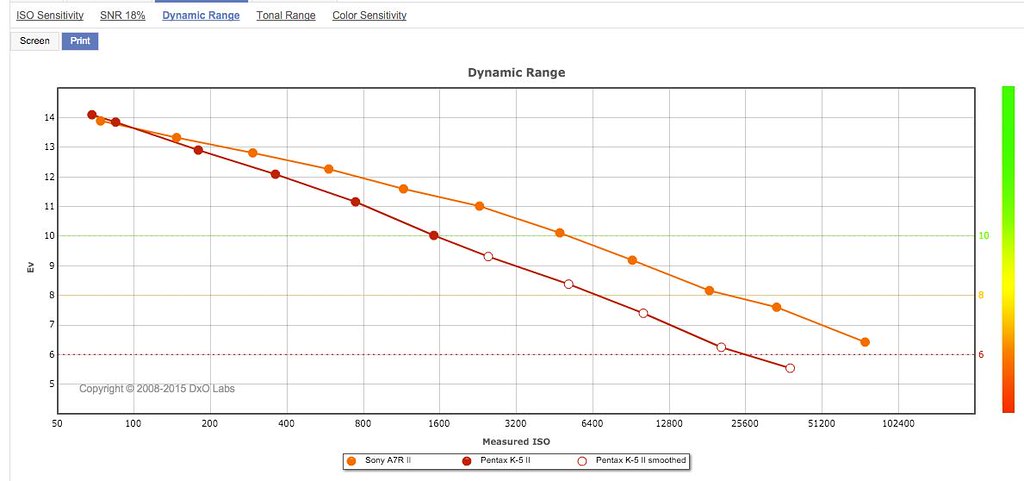 Originally posted by jsherman999
Originally posted by jsherman999 
Those factors, but also sensor area. For example two sensors cut from the same wafer, but one cut to aps-c and one to FF dimensions - the larger sensor will collect more total light at the same FOV and exposure, and it's resulting image will have about 1.3 stops less noise as a result.
That... does not make sense. What are you meaning here by exposure? In this context, I take it as the light volume registered per square mm of sensor - it's independent of total sensor area. But assuming the same light volume per square mm and the same iso setting, then the noise level per pixel will be the same. Each square mm of sensor doesn't know if it's part of a large sensor or a little sensor - it generates the same sensor noise regardless. (Although, if they're cut from the same wafer, the larger sensor has -more pixels-. So if you downsize the result to the same dimensions as the smaller sensor, sure, the larger sensor has less noise. You're losing noise with the downsampling (along with resolution). But if you're
not downsizing, then the noise in each 100% crop is
inherently the same, because it comes from the sensor.)
But... that doesn't mean you can get an identical image out of them, though, because in order to get the same FoV and ISO, aperture and consequently DoF must vary. If you want to hold the DoF and FoV constant, then ISO must vary (due to, as you say, different light volume) and on the 'cut from the same wafer' pair of sensors, that means they will have a different level of noise. But that is a result of a choice to vary ISO in order to duplicate FoV -and- DoF across the two sensors, it isn't that a smaller sensor cut from the same wafer suddenly has different noise characteristics by being cut smaller.
(Please tell me if that was coherent!)
Which comes down to... if you are trying to capture an image strictly defined by it's FoV and DoF, then the smaller sensor will need a higher iso setting. Higher iso = higher noise, if the sensors are 'same wafer' identical tech. Hence, larger has less noise. How much difference than makes in the the real world is mostly 'not much' and occasionally 'a lot'. Which side of that fence an individual's photography falls is made up of
way more factors than the nice little exposure triangle has.
 Quote:
Quote: No - some or most of the difference there (assuming similar sensor gens, I'm not really familiar with the EPM2) may have been due to the D7000 having larger sensor area. Can't know what lenses you were using on each and what f-stops so I can't say for sure, but if you were shooting at the same FOV and exposure, the D7000's larger sensor kicks in.
This one is a case where the sensors are
not from the same wafer. They both have the same 16 megapixels, but with the D7000 being larger, the pixels are larger. The difference isn't from the size of the sensor, but in the size of the pixels on the sensor.


 Similar Threads
Similar Threads 




 Well, every image you view or print is 'scaled' one way or another unless you always display or print at native resolution. For example, I think a 4K screen is at about 8MP. A printer driver or display driver does the scaling for you if you don't do it in PP first.
Well, every image you view or print is 'scaled' one way or another unless you always display or print at native resolution. For example, I think a 4K screen is at about 8MP. A printer driver or display driver does the scaling for you if you don't do it in PP first.

 ). And this only applies at base ISO. Change ISO, change results.
). And this only applies at base ISO. Change ISO, change results.







 Post #33 by bxf
Post #33 by bxf








